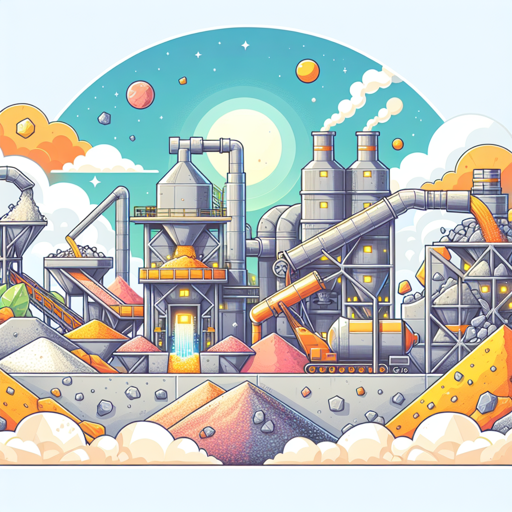Unearthing the Cement Production Process
A detailed look into the intricacies of producing one of the world's most used materials: cement.

Introduction
Cement is the key ingredient in the creation of concrete, the most widely used construction material in the world. Despite its prevalence, the process behind its production remains a mystery to many. This article aims to shed light on the intricate process of cement production, from the raw material extraction to the final product packaging.
The Cement Production Process
Cement production involves various stages, each playing a crucial role in the quality and properties of the final product.
Raw Material Extraction
The production process begins with the extraction of raw materials, typically limestone (calcium), sand or clay (silicon), bauxite (aluminium), and iron ore. These materials provide the four essential elements required in the manufacture of cement: calcium, silicon, aluminium, and iron.
Crushing and Grinding
Once the raw materials have been extracted, they undergo a crushing process to reduce them to a size of about 3 inches or less. After crushing, the materials are then ground to a fine powder in a mill.
Heating in a Kiln
The finely ground raw material, known as raw meal, is then heated in a kiln to a temperature of about 1450 degrees Celsius. This process, referred to as calcination, results in the formation of new compounds that give cement its binding properties.
Grinding and Final Product Packaging
Following calcination, the material is cooled and then ground again to a fine powder. Gypsum is added during this stage to control the setting time of the cement. The final product is then packaged in bags and ready for use.
“Cement is not just a matter of mixing together a few ingredients. It’s a complex process that requires precision and expertise.” - Unknown
The following table summarizes the main steps and their details:
| Steps | Details |
|---|---|
| Raw Material Extraction | Extraction of limestone, sand or clay, bauxite, and iron ore |
| Crushing and Grinding | Raw materials are crushed and ground to a fine powder |
| Heating in a Kiln | Raw meal is heated to about 1450 degrees Celsius |
| Grinding and Final Product Packaging | Material is cooled, ground, and packaged |
External Reference
For more detailed information about the cement production process, consider visiting the Portland Cement Association’s website.
Conclusion
Understanding the cement production process provides a deeper appreciation for the complexities behind everyday materials. From the extraction of raw materials to the final product packaging, each step is crucial in producing high-quality cement. This knowledge not only satisfies our curiosity but also highlights the importance of responsible mining and production practices in preserving our planet’s resources.